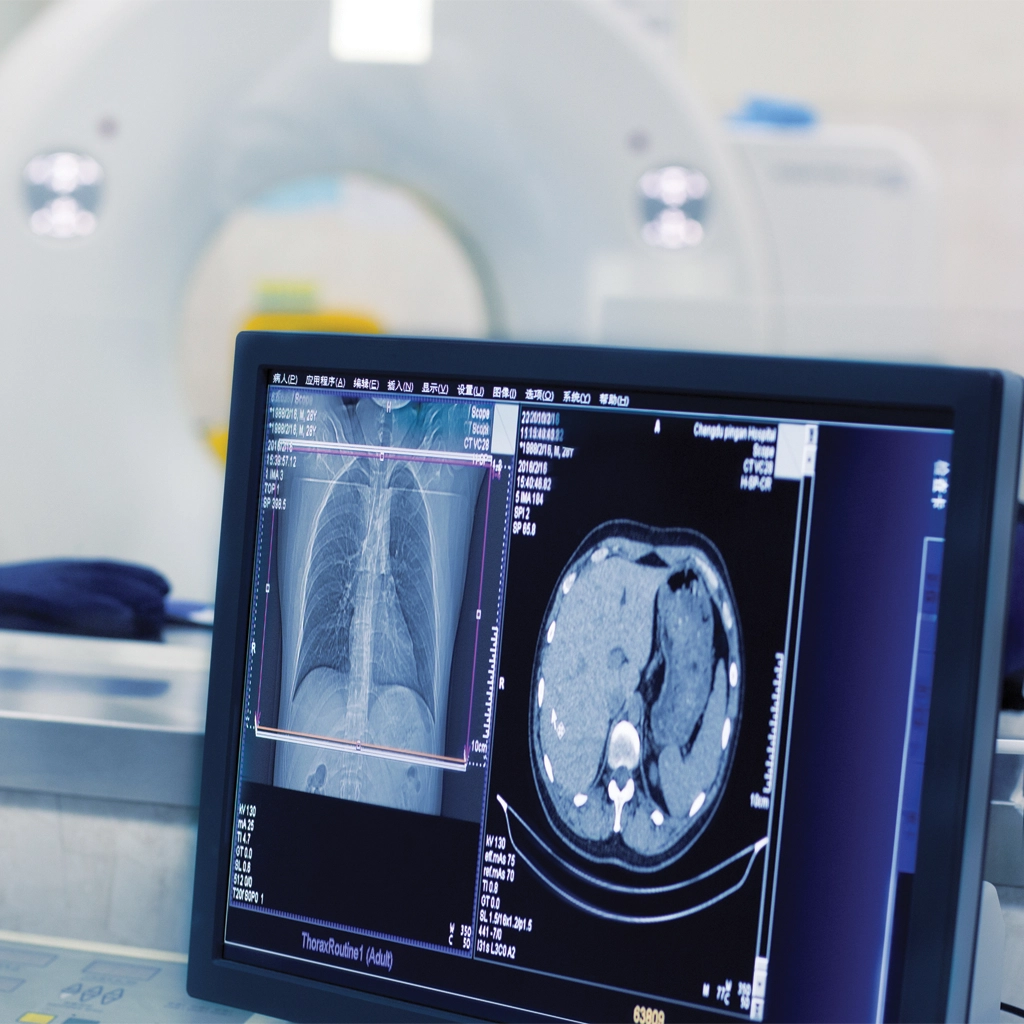What is Positron Emission Tomography (PET)?
PET is a nuclear medicine examination. A PET scanner is actually two machines in one: A CT scanner for anatomical imaging and the PET scanner for functional imaging at the cellular level.
The procedure is simple; an injection of a short-lived radioactive tracer is given, similar to a blood test. This tracer is usually a form of sugar. After about an hour of quiet waiting to allow the tracer to travel through the body and become concentrated in the tissues, a CT scan is first performed, followed by the PET scan. The PET scan is then viewed by the radiologist in conjunction with the CT scan. The uptake of this material allows the radiologist to determine how your cells are functioning and how quickly they are reproducing.
PET can be used to evaluate oncology treatments for cancer. PET can evaluate the response to treatment and is useful in evaluating most malignancies. PET can also evaluate your heart muscle after a heart attack. The radiologist can also evaluate your brain; it has proven very useful in diagnosing Alzheimer’s disease and seizure disorders.
Preparation for Positron Emission Tomography
Each exam requires specific preparation, and this preparation is quite critical. It is important to follow the instructions given when scheduling the appointment for the best test results.
Exam Time
The exam takes between an hour and a half to two hours. After the injection you will wait quietly for 60 minutes. There is then an additional 30-60 minutes for the actual scan to be performed.
Exam Results
After your exam, the radiologist will review your images, and a report will be sent directly to your physician. Reports are available within 24 to 72 hours.
